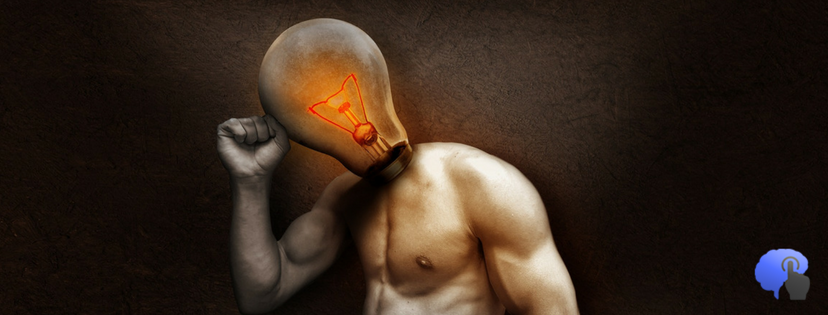
Recently, the inability of economic theory to come up against the current financial crisis gave the chance to a fresh, alternative approach of economics come to the fore: Behavioral Economics.
The science of Behavioral Economics rejects the assumption that people are fully rational maximizers of preference satisfaction, like in traditional economics, and introduces psychological factors in the study of economic models. As Behavioral Economists advocate, people deviate from rational decisions and this is done in a systematic and predictable way. Behavioral Economics rejects the assumption of “unbounded willpower,” and “unbounded self-interest.”
In other words, as the Behavioral Economics Professor Dan Ariely mentions in his book “Predictably irrational”, irrational decisions and behavior appear repeatedly and helps us predict them in advance. Indeed, our temporary impulses often do not let us achieve our long-term goals. We usually lose the battle of procrastination by picking immediate satisfaction over reaching our long-term goals and underestimating or ignoring our systematic deviations from rationality.
What caused the spread of Behavioral Finance over the last decade?
An important event that expanded the identification of behavioral economics around the world is the award for the year 2002 of the Nobel Prize of Economics to Daniel Kahneman for his creative work in psychology and his contribution to Behavioral Economics. Kahneman challenged the rational model for judgement and Decision-Making. In his book “Thinking fast and slow“, he leads us in the human mind and explains the two systems that guide our thinking. He calls this theory “Dual System Theory”.
The human brain, when an individual arrives at a decision point, is divided into two easily distinctive systems, called System 1 and System 2:
- System 1 works autonomously and quickly and requires minimal control effort. In other words, it is our subconscious. Also, this system is affected by emotions, prejudices and previous experiences.
- On the other hand, System 2 takes action when we make decisions, in which the brain needs to process more complex information. It requires the user’s effort and attention and is interwoven with selection and concentration.
Kahneman, in addition, reveals the incredible possibilities, defects and distortions of our thinking and emphasizes the influence of intuitive impressions on our behavior.
The consequences of loss aversion and excessive confidence in corporate strategies, the difficulty in estimating the factors that lead to happiness, the strong impact of cognitive biases in decision making, all of these could be understood by knowing how both systems form the judgements and the decisions we make.
For more information on the Theory of the Dual System, click here.
A Brief History of Behavioral Economics
Shakespeare, at his famous work ‘Hamlet’, says:
“What a piece of work is a man, how noble in reason, how
infinite in faculties, in form and moving, how express and
admirable!”
Yet from the classical period, microeconomics were closely connected to psychology. Specifically, Adam Smith wrote the book “The Theory of Moral Sentiments”, which proposed psychological explanations of individual behavior and Jeremy Bentham extensively developed the psychological background of utility.
With the passage of time, economists in the development of neoclassical economics tried to transform economic science in a natural science, drawing assumptions about economic behavior from assumptions about the nature of economic subjects. So, they developed the concept of ‘Homo Economicus’, whose psychology was essentially rational. This led to unintended and unpredictable errors. However, several distinguished neoclassical economists have used sophisticated psychological explanations, including Francis Edgeworth, Vilfredo Pareto, Irving Fisher and John Maynard Keynes. Economic psychology appeared in the 20th century in the works of Gabriel Tarde, George Katona and Laszlo Garai.
In the 1960s, cognitive psychology began to cast more light on the brain as an information processing device (unlike behavioral models). Psychologists in this field, such as Ward Edwards, Amos Trevsky and Daniel Kahneman began to compare their cognitive models of decision making under risk and uncertainty to economic models of rational behavior. In mathematical psychology, there is a longtime interest in the transitivity of preferences and the type of utility scale of measurement (Luce, 2000).
How to apply the findings of Behavioral Economics in our daily life?
Behavioral Economics apply to every aspect of our daily life, where we have to make a decision.
To successfully overcome or even prevent the economic shocks and improve social welfare, it is necessary to realize that individuals make errors and act irrationally in a systematic and predictable way. So it is not impossible to eradicate irrationality on the long term.
When man makes conscientious choices and rational decisions, his quality of life and prosperity is improved at a personal, professional and economic level.
Anastasia Varakli
Behavioral Researcher & Writer for nudge Unit Greece
~Explaining Behavioral Economics Simply~
Sources
- DANIEL KAHNEMAN (2002) Thinking Fast and Slow
www.amazon.com/Thinking-Fast-Slow-Daniel-Kahneman/dp/0374533555
- DAN ARIELY (2010) Predictably Irrational: The hidden forces that shape our decisions
www.amazon.com/Predictably-Irrational-Revised-Expanded-Decisions/dp/0061353248/
- WILLIAM SHAKESPEARE(2000) Άμλετ , πρίγκιπας της Δανίας
